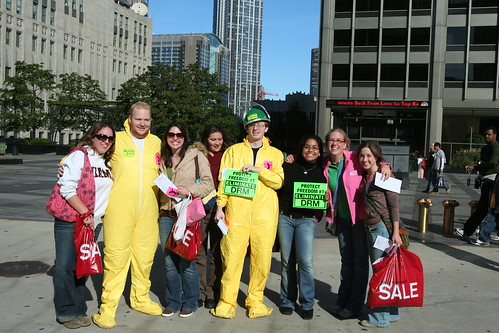Last Updated on October 29, 2012, 5:44 pm ET
Last Friday the Librarian of Congress officially issued the latest iteration of rules (here) describing exceptions to the general rule in the Digital Millennium Copyright Act (DMCA) that it is unlawful to break digital locks (also known as technical protection measures (TPMs) or digital rights management (DRM)).
The law requires that every three years the Copyright Office seek information about noninfringing uses that are frustrated by digital locks, and based on submissions from the public, recommend exceptions to the Librarian, who issues a final order with classes of works that can be unlocked. This time around, two rule changes should be of particular interest to research libraries.
First, there is a significantly expanded exception to allow breaking digital locks on ebooks in order to facilitate access for the print disabled. The rule passed in 2010 (renewed by the Librarian, against the recommendation of then-Register of Copyrights Marybeth Peters) allowed breaking DRM to make ebooks accessible only if there was no accessible version available on any platform, anywhere in the market. Under the old rule, a print-disabled person who already owns an e-reader but who needs access to a work that is only accessible on a competing platform would have to buy a second e-reader (most likely an iPad, starting at $329), rather than crack the version on the reader she owns. There is no such requirement in the new rule; as the Librarian acknowledges, the market reality is that owners of a particular e-reader are effectively locked in to only purchasing ebooks on that platform, rendering the availability of accessible versions on other platforms irrelevant. Now a print-disabled reader can break the digital lock on any lawfully acquired ebook in order to make it accessible.
(There is some confusing language about ensuring that “the rights owner is remunerated,” but as I read the full rule making, all that this requires is that each print-disabled user lawfully acquire her own copy before cracking it to make it accessible. I.e., the rule is meant to prevent digital locks from being a barrier to access, but it is not meant to exempt the print-disabled from having to buy or otherwise lawfully acquire ebooks.)
The new rule also applies to ebooks obtained and used by an “authorized entity” as defined by Section 121 of the Copyright Act, aka the Chafee Amendment. This rule has broader application today than it might have had a month ago, as the court in Authors Guild v. HathiTrust clarified recently that every university library can be an “authorized entity” under Section 121. Therefore, this rule, together with the ruling in HathiTrust, should allow research libraries to make ebooks accessible for all of their patrons, even if it requires breaking DRM. At the same time, the report notes that the Register of Copyrights believes Section 121 is growing out of date and would benefit from a more comprehensive update. Given the broad scope for fair use as a right for libraries to provide access for the disabled when markets fail, which was strongly expressed in the ARL Code of Best Practices in Fair Use for Academic and Research Libraries and then ratified in the HathiTrust decision, we will have to watch closely to ensure that any proposed change to Chafee is an improvement and not a regression from the status quo.
Second, the exception for using video materials is significantly expanded. The rule passed in 2010 applied to all professors and some students (those studying film) at the college level, and it allowed breaking locks on DVDs in order to take short clips for criticism and commentary. The new rules add college students studying subjects other than film, k-12 teachers, and authors of multimedia works of criticism (i.e., ebooks), among other users, and the new rules apply to files purchased online as well as to DVDs.
There is an interesting change in the description of appropriate uses, which now requires that educational users be engaged in “close analysis” of the captured excerpts in order to justify use of the decrypted digital stream. Where high quality images are not necessary to the analysis, the rules suggest, the user should use “screen capture” technology that does not break encryption, but rather copies lower-quality video after it has been decrypted by an authorized player—i.e., machines that exploit the so-called “analog hole” in digital encryption systems. Whether the use of such technologies is itself permissible under the DMCA has been the source of some controversy, so the new rules also include an exception covering the use of screen capture technology for the same purposes as decryption. Whether a particular use requires “close analysis” is a difficult and subjective determination, which should ultimately leave the choice to the discretion of the user.
The complete rules and other relevant material can be found at http://www.copyright.gov/1201.




